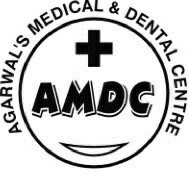Heart and lung diseases are two broad categories of conditions that affect the cardiovascular and respiratory systems, respectively. Here is an overview of common heart and lung diseases: Heart Diseases: Coronary Artery Disease (CAD): Atherosclerosis (hardening of the arteries) leads to the narrowing or blockage of coronary arteries, reducing blood flow to the heart muscle. Heart Attack (Myocardial Infarction): Occurs when blood flow to a part of the heart muscle is blocked, leading to damage or death of the heart tissue. Heart Failure: The heart's inability to pump blood effectively, leading to insufficient oxygen and nutrients delivered to the body's tissues. Arrhythmias: Irregular heartbeats or abnormal heart rhythms, which can affect the heart's ability to pump blood. Valvular Heart Diseases: Conditions affecting heart valves, such as stenosis (narrowing) or regurgitation (leakage), impacting blood flow within the heart. Cardiomyopathy: Diseases that affect the heart muscle, leading to impaired pumping function. Hypertension (High Blood Pressure): Persistent elevation of blood pressure, increasing the workload on the heart and blood vessels. Lung Diseases: Chronic Obstructive Pulmonary Disease (COPD): A group of progressive lung diseases, including chronic bronchitis and emphysema, characterized by airflow obstruction. Asthma: Chronic inflammation of the airways, leading to episodes of wheezing, shortness of breath, and chest tightness. Pneumonia: Inflammation of the air sacs in the lungs, often caused by infection, leading to symptoms like cough, fever, and difficulty breathing. Lung Cancer: Uncontrolled growth of abnormal cells in the lungs, often associated with smoking but can also occur in non-smokers. Interstitial Lung Disease (ILD): A group of disorders causing inflammation and scarring of the lung tissue, affecting the ability to breathe. Pulmonary Hypertension: High blood pressure in the arteries of the lungs, putting strain on the right side of the heart. Obstructive Sleep Apnea: Repeated interruptions in breathing during sleep, leading to reduced oxygen levels and fragmented sleep. Shared Risk Factors: Smoking: A major risk factor for both heart and lung diseases. Physical Inactivity: Lack of regular exercise can contribute to the development of cardiovascular and respiratory conditions. Unhealthy Diet: Poor dietary habits can contribute to conditions like hypertension and atherosclerosis. Obesity: Excess body weight is associated with an increased risk of heart disease and certain lung conditions. Genetics: Family history can play a role in the risk of heart and lung diseases. Prevention and Management: Healthy Lifestyle: Adopting a healthy diet, engaging in regular physical activity, and maintaining a healthy weight can reduce the risk of both heart and lung diseases. Smoking Cessation: Quitting smoking is crucial for preventing and managing heart and lung diseases. Regular Checkups: Routine medical checkups can help detect early signs of heart and lung diseases. Medication and Treatment: Depending on the specific condition, medications, lifestyle modifications, or surgical interventions may be recommended. Pulmonary Rehabilitation: For individuals with lung diseases, pulmonary rehabilitation programs can improve breathing and quality of life. Cardiac Rehabilitation: Following a heart event, cardiac rehabilitation can help with physical and emotional recovery.

This is your website preview.
Currently it only shows your basic business info. Start adding relevant business details such as description, images and products or services to gain your customers attention by using Boost 360 android app / iOS App / web portal.
91919004046508
Treatments
We focus on continuous quality improvement to provide patients a safe environment to recieve highest quality care
Have any question or need any consultation?
Online appointment booking is not available right now.
Your enquiry
Your contact info
Appointment Confirmed
Your appointment ID is
| Doctor Name: | |
| Date & Time: | |
| Contact: | +918048052859 |
| Address: | F-01/02, Gokul Heaven, Thakur Complex, Kandivali East, Mumbai - 400101 |
| Appointment fee: | |
| Payment mode: | |
| Join video call at: |
Thanks for choosing us.Your appointment details has been shared on your mobile number as well. Please arrive atleast 10 minutes ahead of the scheduled time.
Success
